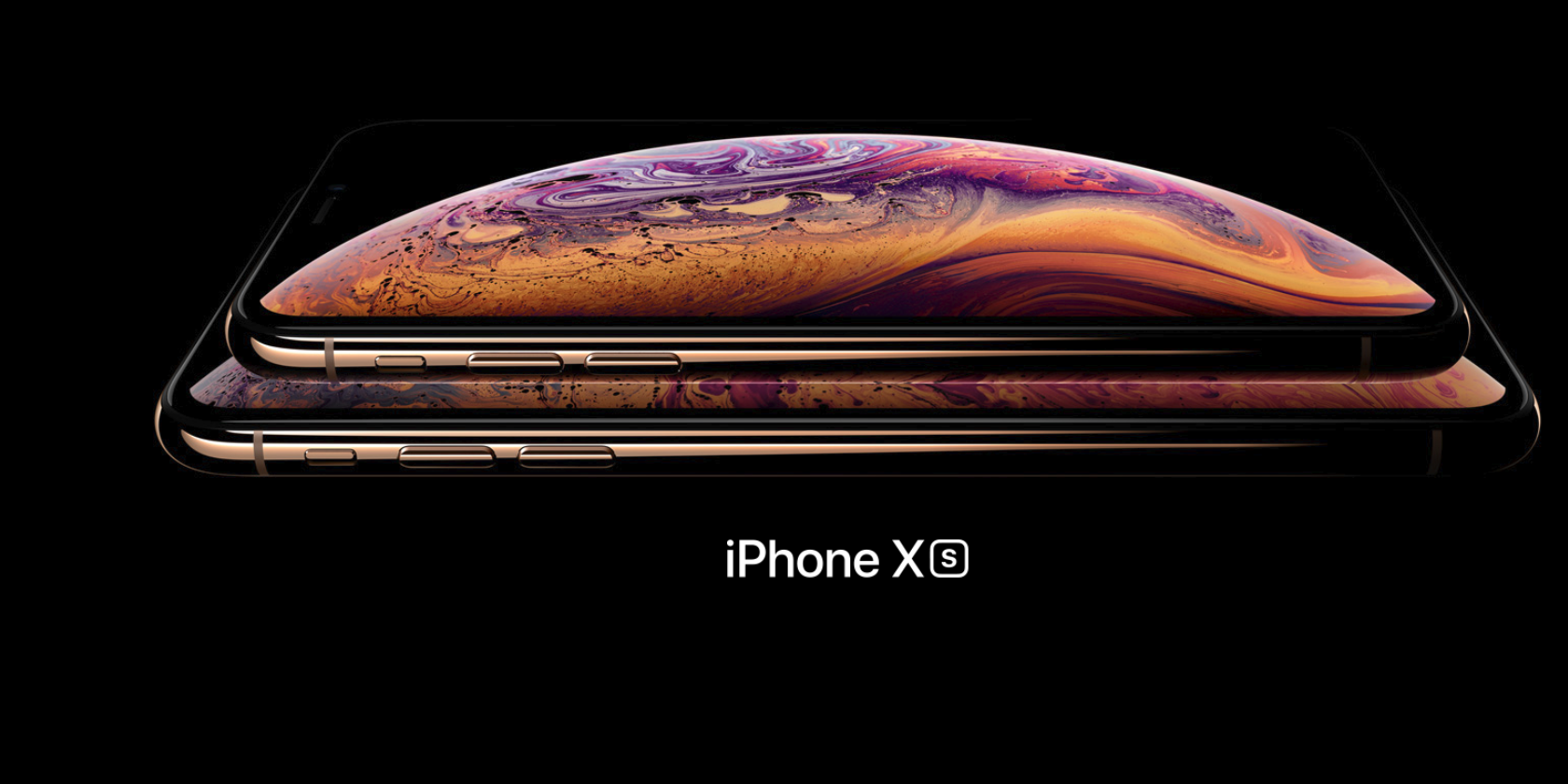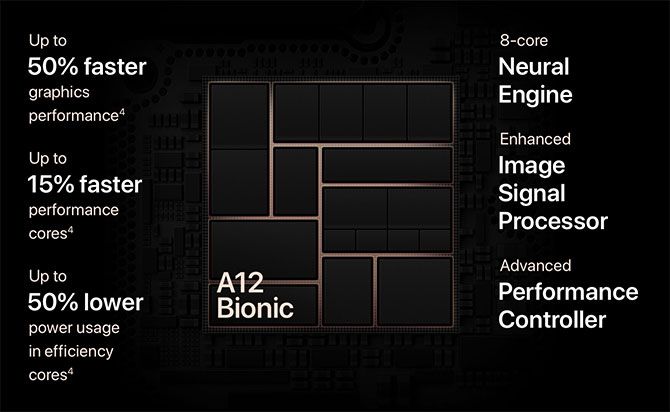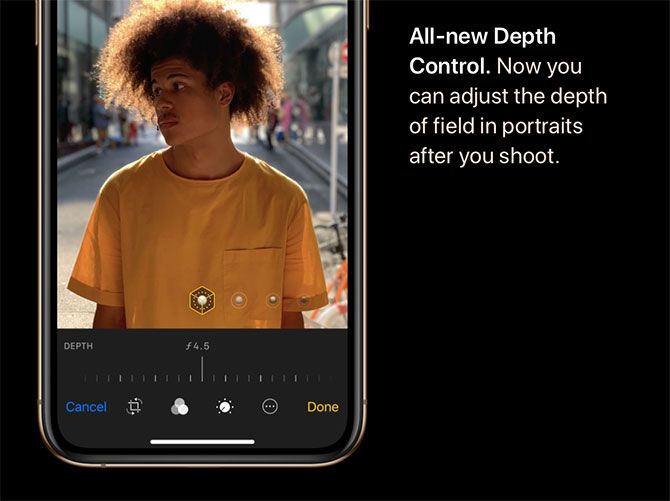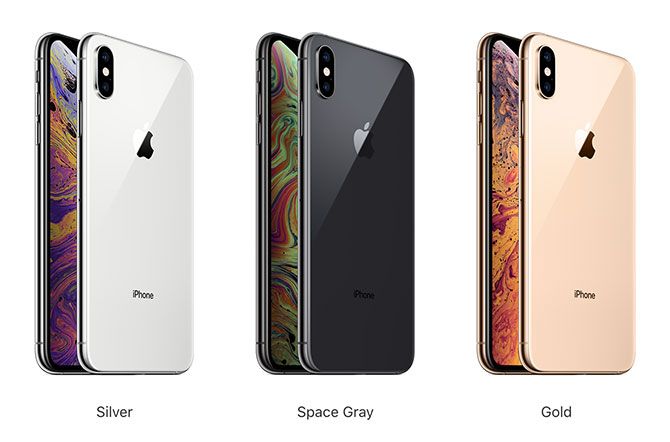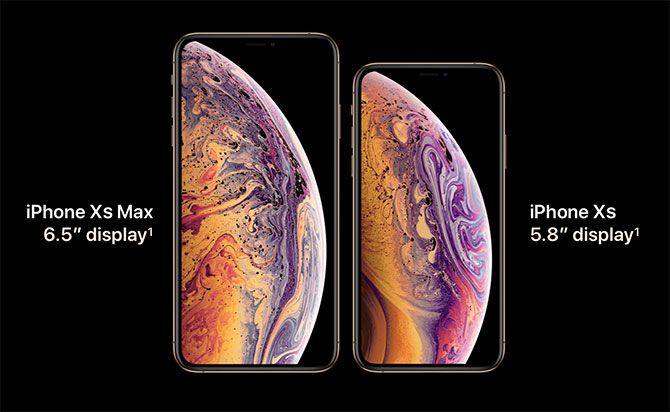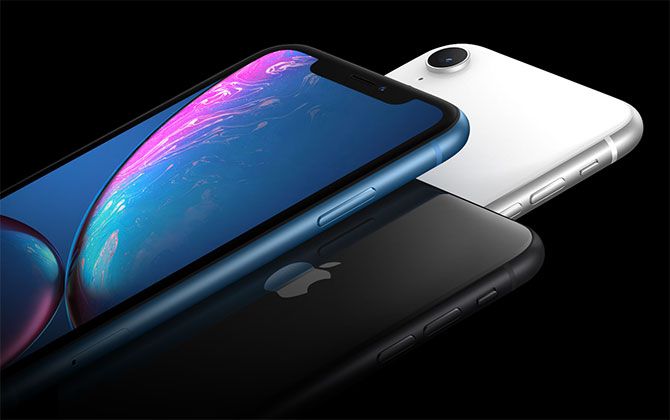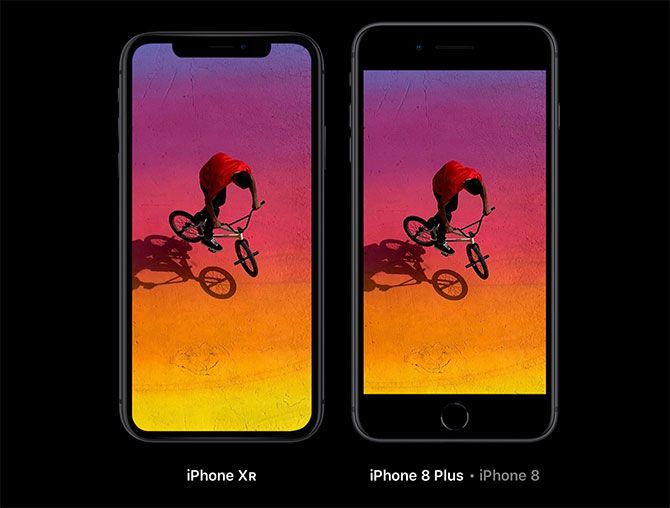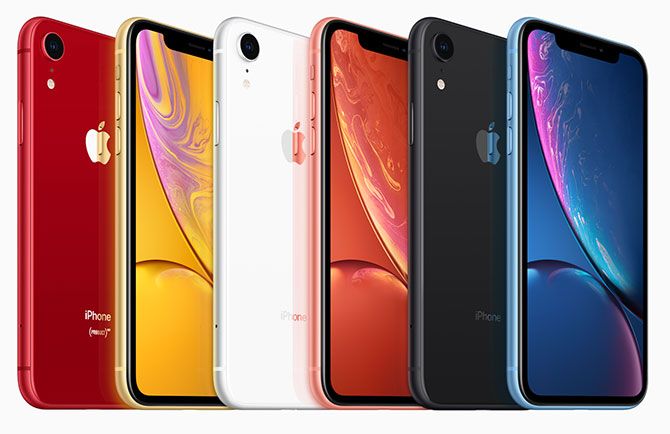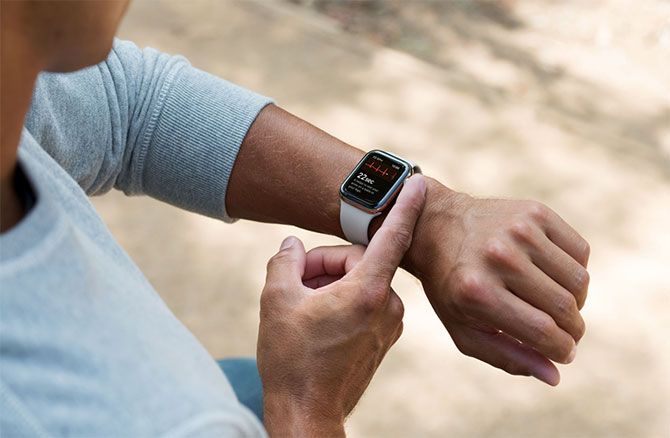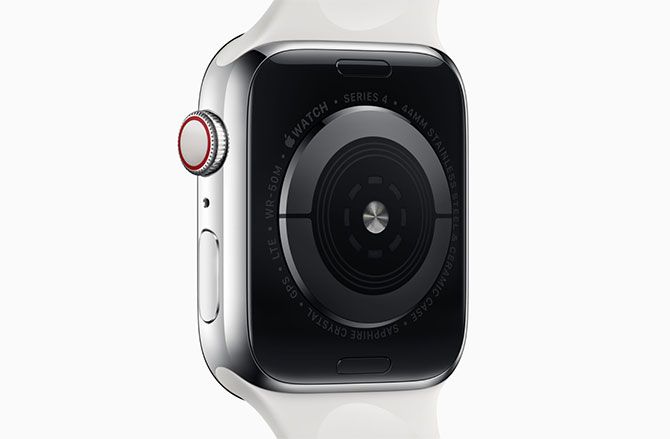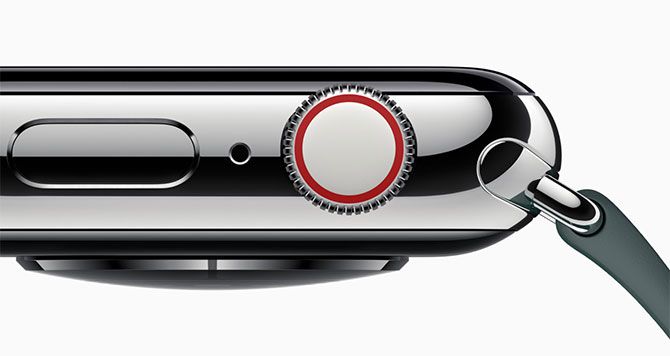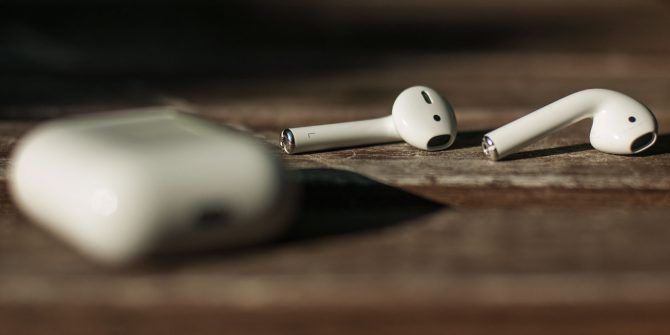Apple has just wrapped up its fall 2018 event, with three new iPhones and a new Apple Watch available for pre-order now. The rumors were mostly true, but that shouldn't surprise anyone by now.
The company also announced the release date for the upcoming iOS 12 update, macOS Mojave, and the new version of tvOS which powers the Apple TV. We've crunched through the news to bring you the most important and interesting bits. We'll also have a look at what was missing from the event.
iPhone Xs
With the introduction of the iPhone X in 2017 (our review), it made sense that 2018 was going to be an "s" year. In these, Apple traditionally refreshes the internal hardware rather than focusing on design refreshes. With the arrival of the iPhone Xs and its new larger sibling, the iPhone Xs Max, that's exactly what we got.
Both versions come with Apple's first 7-nanometer processor, the A12 bionic. This promises more advanced machine learning in the form of the eight-core Neural Engine. That means the new iPhones will be better at tasks like analyzing photos for recognized objects, faces, and more.
Apple also announced that the new chips use 50 percent less power than the previous version. They also come with a 15 percent boost in overall speed, and 50 percent faster GPU architecture. Overall, these improvements will result in faster Face ID, better augmented reality, improved pattern recognition (meaning improved Snapchat filters), and better gaming performance. It's what we expect from an "s" upgrade.
Both models are also IP68 water resistant, which means you can submerge them to a depth of around 32 yards for 30 minutes. Oddly enough, Apple only markets the depth around two yards. But in order to reach the IP68 rating, the devices must comply with the 32 yard requirement.
Camera, SIMs, and More
Apple has buffed the camera technology in the new Xs and Xs Max. They pack a better image signal processor on the A12 chip, improved quad-LED true tone flash, and smarter camera technology for better bokeh when taking portraits. Both models still feature the dual-lens system, with f/1.8 and f/2.2 apertures on the wide and telephoto lenses respectively.
A new Depth Control feature lets you adjust the depth of field after you've taken your shot. Meanwhile, Smart HDR apparently features zero lag for better exposures with less inconsistencies. The iPhone Xs uses the same impressive OLED display as the last version. Plus, both models ship with Gorilla Glass 5 for displays that are twice as tough as last year's model.
Thanks to Apple's eSIM virtual SIM technology, the new iPhones have support for two phone numbers. Another communications update means support for Gigabit-class LTE, plus improved band support for better worldwide roaming.
The iPhone Xs offers a 30 minute improvement in battery life over its predecessor, with pricing starting a $999 for the 64GB option. You can also get 256GB and 512GB versions for $1,149 and $1,349 respectively. Both phones are available in a new gold finish.
iPhone Xs Max
While the Xs retains the same 5.8-inch form factor as its predecessor, the Xs Max is a larger 6.5-inch iPhone. It houses a 2688x1242 display at the same 458 pixels-per-inch rating as its smaller sibling. Not only is it a bigger screen, but the iPhone Xs Max can run two apps side-by-side in landscape mode thanks to all that real estate.
Apple chose the "Max" name since there's more screen space than a traditional "Plus" model iPhone. A bigger screen means more space for a bigger battery, so the iPhone Xs Max features a 90 minute boost in usage over the standard iPhone X introduced in 2017.
As expected, the Xs Max really is just a larger version of the new Xs, with a bigger price tag to match. You can pick up a 64GB model for $1,099, with 256GB and 512GB capacities available for $1,249 and $1,449 respectively.
iPhone Xr
Also rumored but still somewhat surprising for a company like Apple is the new cut-price iPhone Xr. It's a 6.1-inch budget version of the Xs, available in a rainbow of colors: red, yellow, white, coral, black, and blue. It provides considerably more screen real estate than the iPhone 8 (our review), while only being a little bit larger.
In order to get the price down, the Xr forgoes the OLED display of the Xs model in favor of a new "Liquid Retina" LCD. Apple boasts that the display has the industry's best color accuracy, a wide color gamut, the same "tap to wake" seen on its OLED panels, and the usual True Tone temperature adjustment.
While the Liquid Retina display is edge-to-edge, there seems to be slightly more bezel when compared with OLED models. Since it's an LCD display and not an OLED, the blacks won't be quite as deep. Just like the previous iPhone X, the Xr leaves the Home button behind. This marks the first time Apple has gone all-in on the design in its flagship lineup.
As you'd expect, the Xr features the same A12 Bionic chip, True Depth camera for Face ID, and a single lens rear-facing camera like that found on the iPhone 8. You get the same Smart HDR and Depth Control features, and the improved image signal processor means cleaner photos and better low light performance.
It's a budget iPhone Xs, but it's really a replacement for the iPhone 8. The new iPhone Xr starts at $749 for the 64GB version, with 128GB and 256GB models available for $799 and $899 respectively. Unlike the Xs models, the Xr isn't available for pre-order until October 9.
Apple Watch Series 4
Also new for 2018 is the thinner Apple Watch Series 4. It features a new design with a larger watch face, and much thinner bezels than previous models. It looks more like a traditional watch and less like a piece of wearable tech. This is fitting since Apple also announced that the Apple Watch is the world's "number one" watch (not just among smartwatches, but all watches).
The Watch now features two sensors on the back. One is an Optical Heart Sensor for measuring heart rate; the other is an Electrical Heart Sensor. This generates an ECG (electrocardiogram) which you can share with your doctor. An advanced accelerometer can now detect falls, prompting the wearer to call an ambulance (which happens automatically if it senses no movement for a minute).
Performance has been improved by double thanks to the new 64-bit processor. Apple has also brought its haptic feedback technology to the Digital Crown, which now "clicks" as you scroll. There are software improvements too, like new watch faces and a redesigned version of Apple'swatch face which makes better use of the larger display.
One thing that hasn't improved is battery life, which still sits at 18 hours of wear. Just like the Series 3, the Series 4 is available in GPS and Cellular versions for $399 and $499 respectively. If you go for the cellular version, make sure you know what your carrier will charge to include it on your plan.
The Watch Series 4 will run watchOS 5, which was announced at WWDC. It packs features like an improved Activity Tracker, Apple's Podcasts app, new Walkie-Talkie functionality, better Siri integration, and more. You can pre-order the Apple Watch Series 4 now.
iOS 12, macOS Mojave, and tvOS 12
In other news, the updated versions of Apple's iOS, macOS, and tvOS operating systems now have official release dates:
- iOS 12: Available on September 17.
- macOS Mojave: Available on September 24.
- watchOS 5: Available on September 17.
- tvOS 12: Available on September 17.
What We Didn't See
Two glaring omissions from this year's event include Apple's AirPower wireless charging station (announced a year ago) and a revised version of AirPods. No AirPods 2 also meant no new Beats wireless headphones, though the rumor mill points to late 2018 as a release date for all these products.
Also absent was any news about iPads, particularly the iPad Pro. Apple is expected to refresh (or discount) the MacBook Air, possibly introduce a new Mac mini, and refresh a few of its other Mac models before the year is out. Thus, it's possible we'll see another event before the fall ends.
Make sure you keep this in mind if you want to buy new Apple gear at the right time!

